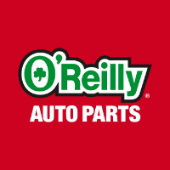-
Welcome to Auto Parts Forum
Whether you are a veteran automotive parts guru or just someone looking for some quick auto parts advice, register today and start a new topic in our forum. Registration is free and you can even sign up with social network platforms such as Facebook, X, and LinkedIn.
Warranty Returns Got You Down? Check The Part!
-
Similar Topics
-
By Counterman
Automotive Parts Associates (APA) announced it recently wrapped up an action-packed weekend in Las Vegas, where winners of the Vegas Adrenaline Adventure Weekend promotion “experienced high-octane thrills and unforgettable moments.” From Feb. 28 to March 2, 10 winners and their guests enjoyed an all-expense-paid trip featuring off-road driving, machine gun shooting, Topgolf, plus $500!
APA said the winners also got to enjoy a Friday night dinner sponsored by FCS. “A special shoutout to FCS for sponsoring a fantastic Friday night dinner, adding to the excitement of the weekend,” APA said.
The promotion, which was open to
link hidden, please login to viewshareholders’ and TruStar members’ customers from September 15 through October 31, awarded entries for every $200 purchased from sponsoring suppliers. In addition to the grand prize trip, 10 second-place winners received a $250 gift card and salespeople earned a $100 gift card for each winner. Following are quotes from participants sharing their appreciation for the experience:
“Thank you very much for the great and memorable trip and your kind hospitality. We do appreciate it. I was glad to meet a lot of shop owners and great people and also exchange great information. We had a great time.” “Both of my sons thoroughly enjoyed themselves. Thanks for putting that together. It was a trip they may never take again together!” “Gail and I would like to say thank you to APA for a great weekend away, we really enjoyed ourselves!” “It was an unforgettable weekend,” said Jan Larson, director of marketing for APA. “What started as a group of strangers on Friday quickly turned into a close-knit group by Sunday, exchanging contact information and sharing stories like lifelong friends. I always encourage our shareholders and TruStar members to take advantage of these promotions. Participation is easy and can have a meaningful impact on employee morale. These events drive engagement, boost sales, and create lasting memories—don’t let your customers miss out on these incredible opportunities!”
APA said it hosts two promotions annually, one in spring and one in fall. Up next is the 2025 Tanks For The Memories Sweepstakes, where ten winners will receive an all-expense-paid trip to drive real tanks at Drive A Tank in Kasota, MN.
The post
link hidden, please login to view appeared first on link hidden, please login to view.
link hidden, please login to view -
By Counterman
Robert Bosch, LLC announced the addition of 79 automotive aftermarket part numbers to multiple product categories in December 2024, adding coverage to 52.9 million vehicles in operation. New part numbers were added to Bosch sensors, brakes, spark plugs and other prominent product categories.
Bosch Braking
Bosch released 18 new part numbers for
link hidden, please login to view Blue brake pads covering 2.4 million vehicles in operation for late model Asian, Domestic and European vehicles. The company said the brake pads feature copper-free friction formulation for improved performance and are towel-wrapped for added protection. Additionally, Bosch released 16 new part numbers for Bosch QuietCast brake pads, covering 2.3 million Asian, Domestic and European vehicles in operation. The Bosch QuietCast brake pads maximize performance while offering quiet operation through a next-generation copper-free friction formulation and an OE-style rubber core multi-layer shim, the company said.
Bosch Sensors
Bosch also released 13 new part numbers across multiple sensor categories. The new releases include five part numbers for the Bosch pressure sensors, three for Bosch crankshaft sensors, two for the Bosch knock sensors and one new part number each for the Bosch oxygen sensors, temperature sensors and camshaft sensors. The new part numbers added coverage to more than 2.2 million vehicles in operation.
Bosch Spark Plugs
Bosch released one new part number for the Bosch OE Fine Wire platinum spark plug, adding coverage to more than 569,000 European vehicles in operation including popular Audi and Volkswagen models.
Bosch released one new part number for the Bosch Nickel Super 4 spark plugs, adding coverage to more than 701,000 vehicles in operation across the U.S and Canada.
Bosch Batteries
Bosch also released 15 new part numbers for the Bosch High Performance starter batteries, adding coverage to more than 31.2 million vehicles in the U.S. and Canada. According to the company, the high-performance starter battery offers reliable starting power in extreme hot and cold climates and is 100% maintenance-free under normal working conditions.
Bosch Fuel Injectors
link hidden, please login to view released seven new part numbers for the Bosch fuel injectors in the new powersports category and covering more than one million vehicles. Bosch said its fuel injectors are manufactured with the highest quality high-alloy steels and plastic coverings for optimum corrosion resistance and longevity. Bosch Wipers
Finally, Bosch added one new part number for the Bosch ICON Extension wiper blade, adding coverage to more than 12.4 million vehicles. The Bosch ICON Extension is equipped with ClearMax 365, an exclusive, patented rubber technology that combines a soft rubber core with a powder-coated shell to provide a clear and clean wipe, the company said.
The post
link hidden, please login to view appeared first on link hidden, please login to view.
link hidden, please login to view -
-





Recommended Posts
Join the conversation
You can post now and register later. If you have an account, sign in now to post with your account.
Note: Your post will require moderator approval before it will be visible.